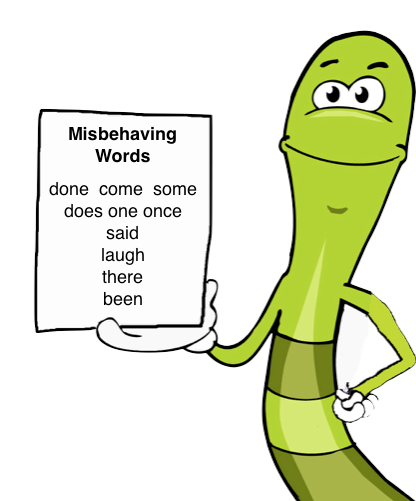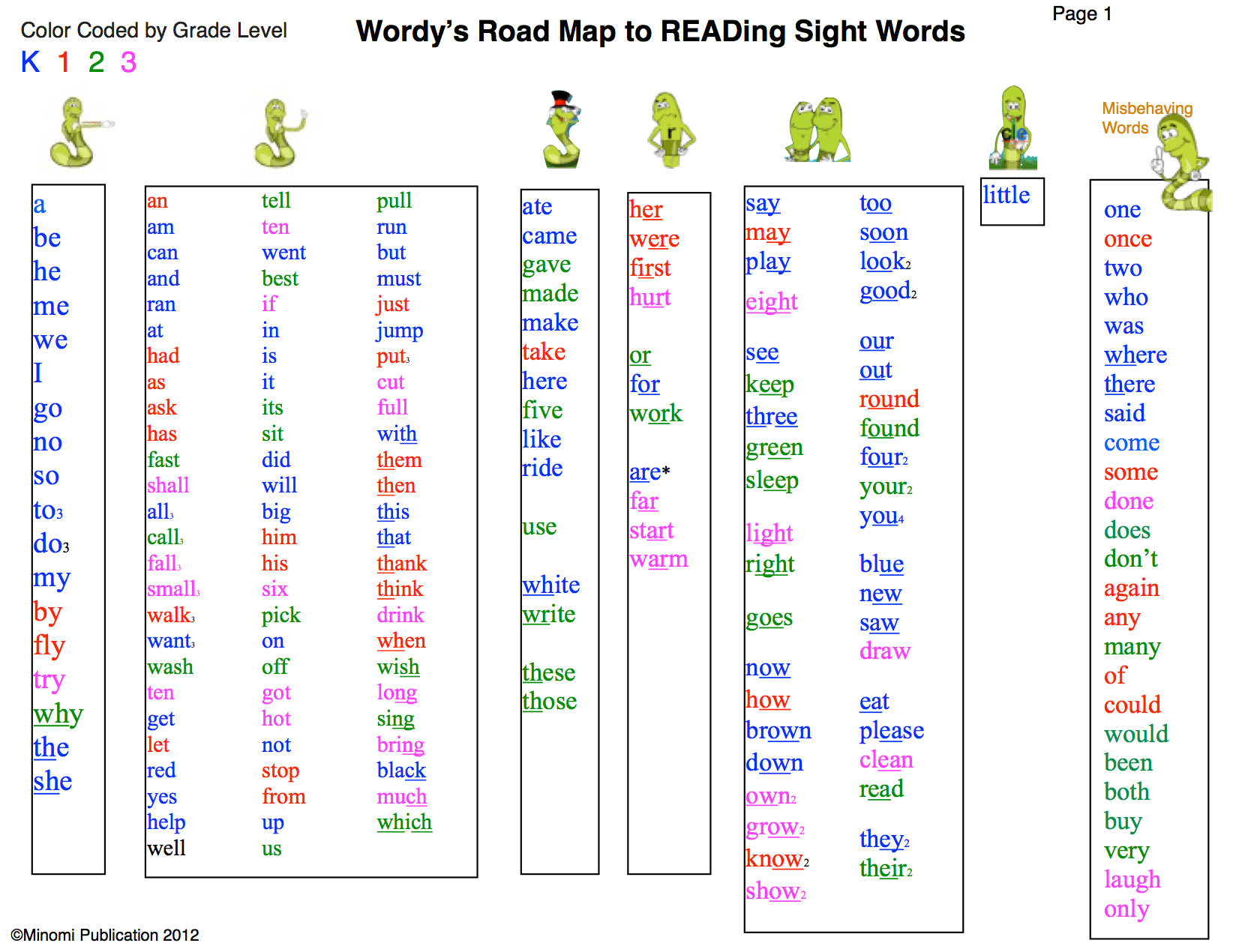Road Map for READing Sight Words
Wow, you have distilled, into one easy-to-read-and-understand article, years of study on my part to figure out how best to teach high-frequency words... I got my master's in reading so I could teach anyone to read. And here I am 14 years later, still learning... this is a fabulous resource- Thank You!
Jennifer N. Masters Degree, Reading
The "Dolch sight words list" was originally compiled in 1936 and then published in 1948. Sight words have been ingrained in our educational system since. Many people, including educators, think sight words need to be memorized because they cannot be sounded out. And they can't!--if you use a one letter/one sound correspondence!!!! But, in fact, all but a handful of sight words can be read using the power of the phonogram code.
No More Sight Words!
Many children who learn the code, even before entering school, are able to read most of these words without memorizing them. But once children start school, they are expected to memorize around 95 sight words by the end of kindergarten. Wordy refers to this method as “Drill and Dry.” DRILL your children with flashcards. Then DRY their tears when frustration and early failure sets in. Not a happy approach--for child or parent.
There is an Easier Way to Learn Sight Words
Sight Word Syllables
Every sight word makes one of 6 syllable patterns. The pattern determines the sound of the vowel. How much easier it is to learn these 6 patterns and 72 phonograms. Your children will learn how to read thousands of words instead of 220.
The Six Silly Syllables
- OPEN: At the end of an open syllable, no consonant is found. The vowel at the end will say its name and make a long vowel sound.
- CLOSED: In a closed syllable, the vowel is short ‘cause a consonant closes it in. This syllable has just one vowel and a consonant at the end.
- MAGIC E: In a Magic e syllable, at the end you’ll see a vowel and a consonant and silent letter e. Standing next to the consonant, magic e can claim, “I’m strong enough to help that vowel be long and say its name.”
- BOSSY R: If the Bossy r syllable is pushy with his roar, r and his neighbor vowel say er, ar, or.
- VOWEL BUDDY: In the Vowel Buddies syllable where two vowels are found, together they will make only one vowel or vowel-like sound.
- CONSONANT-LE: The Consonant-le syllable is at the end of words you’ll see. That consonant is followed by an l and silent e.
Organize them by syllable types to help children read and learn them.
Most sight words can be read and correctly spelled using phonogram sounds, syllable clues and spelling clues. Organize and teach sight words according to their syllable type so children begin to recognize the patterns. Group phonograms that make the same sound together. For example: all, call, fall, walk, and want all make the third sound of /a/. Have children practice writing and reading them.
Empower children to read rather than struggle to memorize these words. Children will ‘see’ the similar patterns and hear the vowel sound placement within the words. When new words come home, add them under the proper syllable type.
What if I find a word that I can’t explain?
English is well structured and logical. Rarely do we find an odd spelling that cannot be explained. Often, the word being questioned is from another language which does not conform to the written English Code. Some words have been with us such a long time that they are no longer pronounced the way they are spelled. Wordy just explains it this way; "Sometimes words are like people; they misbehave and do not always follow the rules."
Wordy just explains it this way; "Sometimes words are like people; they misbehave and do not always follow the rules."

Wordy’s Road Map to READing sight words includes a short list of misbehaving sight words.
Grab your Wordy’s Road Map to READing “sight words.”
220 Dolch Sight Words Map Words


Be aware of the limitations of memorizing whole words. You can only memorize a limited number of them. For some, especially children with dyslexia, memorizing words creates a harmful learning strategy that is hard to overcome. To compound the problem, we may have no idea who these children are when they are still very young. As the adage goes: An ounce of prevention is worth a pound of cure.
Naturally, you will want to practice reading these words over and over so that they do, in fact, become “automatic.” This will happen naturally as practice continues. It is even okay to use high frequency word cards, after teaching the word phonetically, to reinforce the goal of reading these words quickly and fluently. Of course, the best way to naturally recognize and read “sight words” fluently is to expose your children to them in print, both in books and environmental print.



